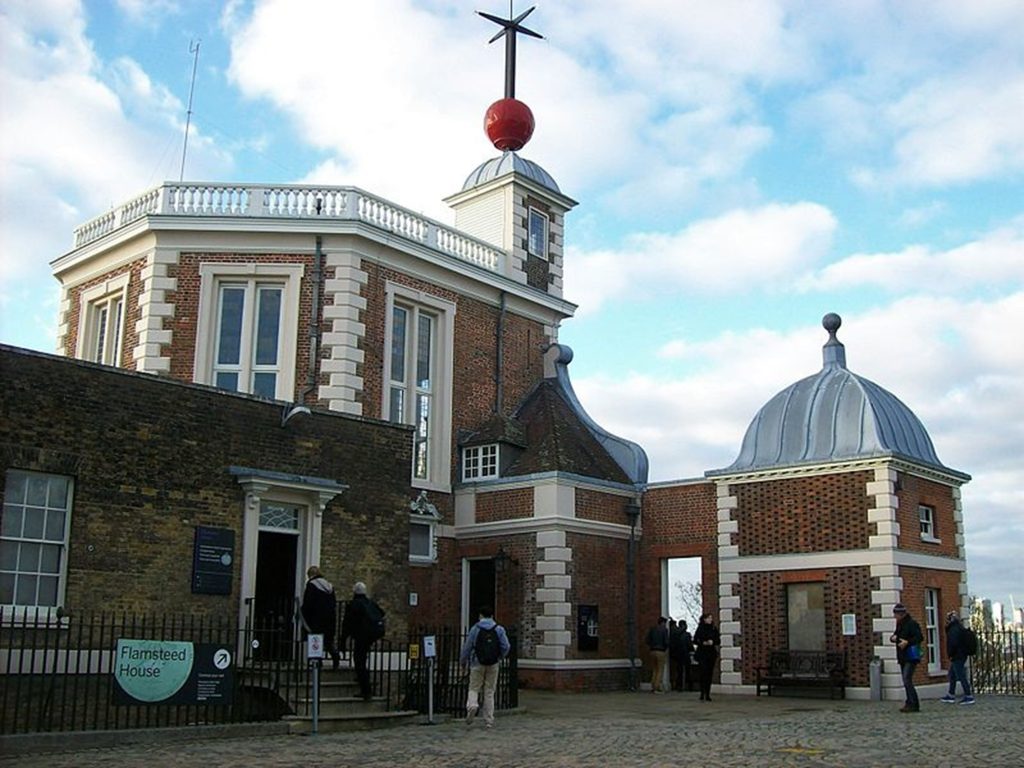So what’s this Zulu Time and how does it relate to ham radio? Zulu Time is the military name for Universal Coordinated Time (UTC). Its time is fixed at Prime Meridian: 0° (zero degrees) longitude. This is the reason for its other names, Z-Time and Zero Time. Before Zulu, it was known as Greenwich Mean Time (GMT).
Greenwich Mean Time, Zulu, UTC, Military, 24-hour, whatever you call it, it is the world’s time. No time zones, no seasonal time changes, just time. For ham radio, it provides the common time base needed for accurate QSO log keeping. In a manner of speaking, all amateur radio operators, regardless of their location, are using the same clock.
Why is It Called Zulu Time?
Since Great Britain was the world’s greatest maritime power when the concept of latitude and longitude was developed, the starting point for designating longitude became the Prime Meridian (zero degrees). It intersects with the Royal Greenwich Observatory in Greenwich, England (hence the Greenwich in GMT). Built by King Charles II in 1675, it was the major center dedicated to navigation, astronomy, and timekeeping.

Royal Greenwich Observatory (Image/Public Domain)
Zulu Time is most often used today by the military, pilots, mariners, and hams. The purpose is standardization. How many military/action movies have you seen where they synchronize watches? As ships and airplanes crossed multiple time zones in one journey, it became more and more important to standardize time.
The term Zulu comes from the shortening of Zero Meridian Time toZ-Time. For a while, it was called Zebra (Zebra Time). The term Zulu Time was first used by the Royal Navy in the 19th century, conforming with the military phonetic alphabet.
How to Calculate Zulu Time
The main thing to know about Zulu Time is that it is always the same, no matter where you are in the world. Here’s how to figure out your own personal version of Z-Time based on your location:
- Convert your time to the 24-hour format, like the military uses. For example, if it’s 2 p.m. where you are, add 12 hours to the time to get a military time of 1400. You don’t need to add anything for a.m. hours. For example, 9 a.m. is 0900.
- Adjust for the time difference (offset) where you are versus Z-Time. So, if you live in the Eastern Time Zone (EST), add four hours because the eastern U.S. is four hours behind GMT– 0400+1400. This makes your Zulu Time 1800Z.
The beauty of Zulu Time is that you don’t have to wonder which time zone is being referred to when you see the time. There is no a.m., p.m., or o’clock to worry about, either. Pronunciation just involves the numbers—0945Z is zero nine forty-five hours or oh nine forty-five hours. The Z indicates that the time is in Zulu (UTC) format, not local time.
Figuring out what the time is versus your local time does take some getting used to, but there are lots of apps and calculators on the web to help you figure things out, not to mention ham logging software.
Logging in Zulu
Logging in Zulu or UTC is highly recommended. Using UTC eliminates confusion over time zones or daylight savings time. Sure, you can calculate UTC on your own, but why not let your computer and logging program handle that chore? They keep the UTC date and time straight automatically. Of course, you are free to use local time as long as you indicate this clearly in the log. Avoid mixing UTC and local times and dates together in the log—use one or the other.
For example, N3FJP logging software reads the UTC time directly from your Windows operating system. As long as you have your time, time zone, and daylight savings time adjustment properly set in your Windows OS, the UTC will be logged correctly.
Things You Should Know
Here are some fast facts about Zulu/UTC time:
- Zulu time does not change with the seasons, but local time may change with daylight savings time. For example, local time on the east coast of the United States is five hours behind Zulu time during winter, but four hours behind during daylight savings time.
- NOAA satellites use Zulu Time or UTC as their time reference. The satellite images that appear on NOAA’s websites are stamped in Zulu Time.
- The Department of the Navy serves as the United States’ official timekeeper. The Master Clock facility is at the U.S. Naval Observatory in Washington, D.C.
- UTC is not a typo. When spoken, it is Universal Coordinated Time, but when written, it’s UTC. The International Telecommunication Union (ITU) felt it was best to designate a single abbreviation for use in all languages in order to minimize confusion.
- Is it 2400 or 0000? Military time uses both 2400 and 0000 to designate midnight. This may seem confusing at first, but it makes more sense if you think of 0000 as a start time and 2400 as an end time. You’d use 0000 in reference to the beginning of an activity but 2400 to indicate when an activity will end.
- Imagine not receiving a QSL card from that very rare DX entity because you used the wrong conversion when going from your local time to UTC. Get a UTC clock. They’re worth the investment.
- People usually think that time zones are determined by whole numbers. Some countries use half-hour and quarter-hour offsets. India lies in the time zone UTC+5:30, South Australia and Northern Territory use UTC+9:30. Nepal lies in an even weirder time zone: UTC+5:45.
- A leap second is a one-second adjustment that is occasionally applied to Zulu Time to reconcile the difference between precise time and imprecise observed solar time due to variations in the earth’s rotation.

